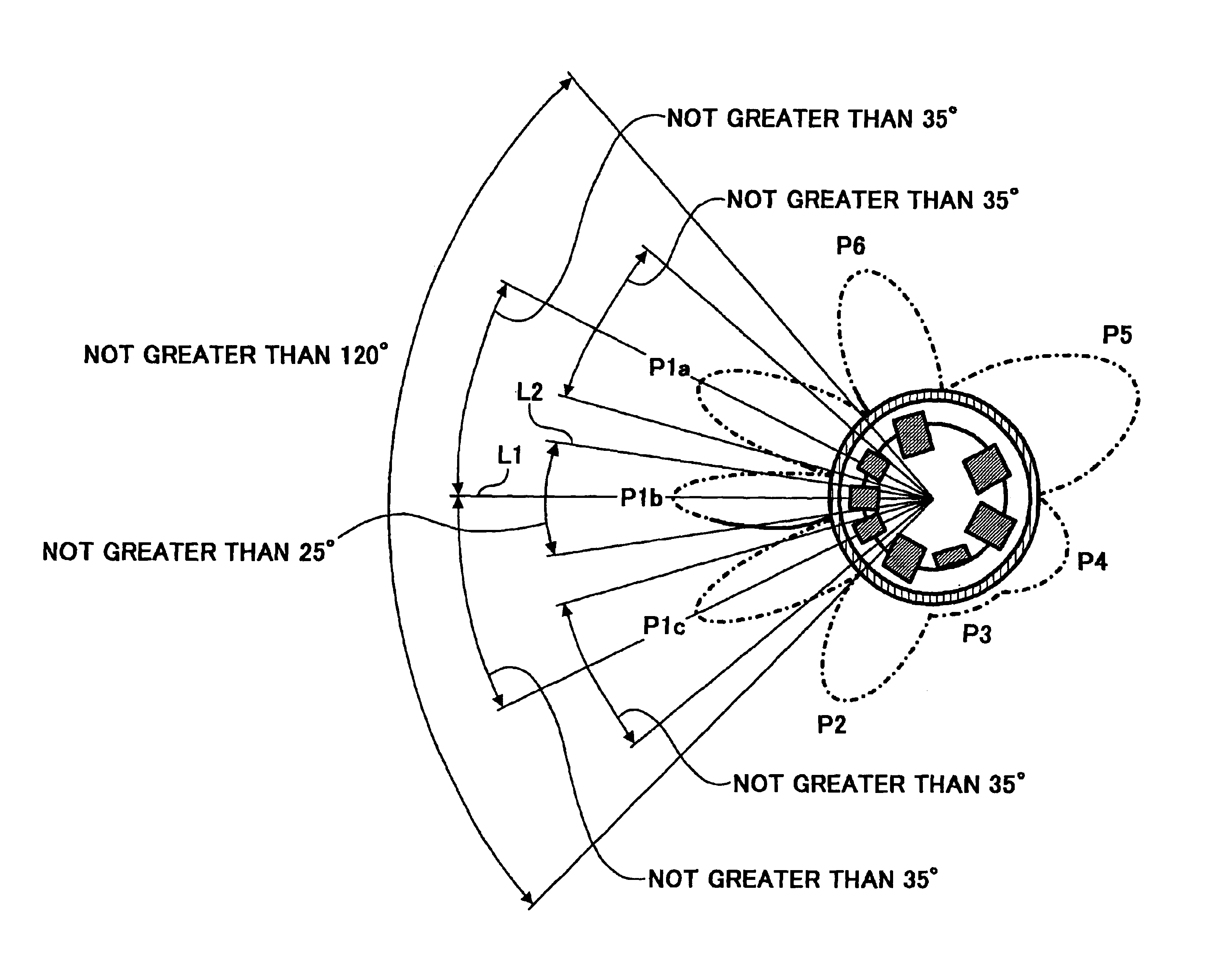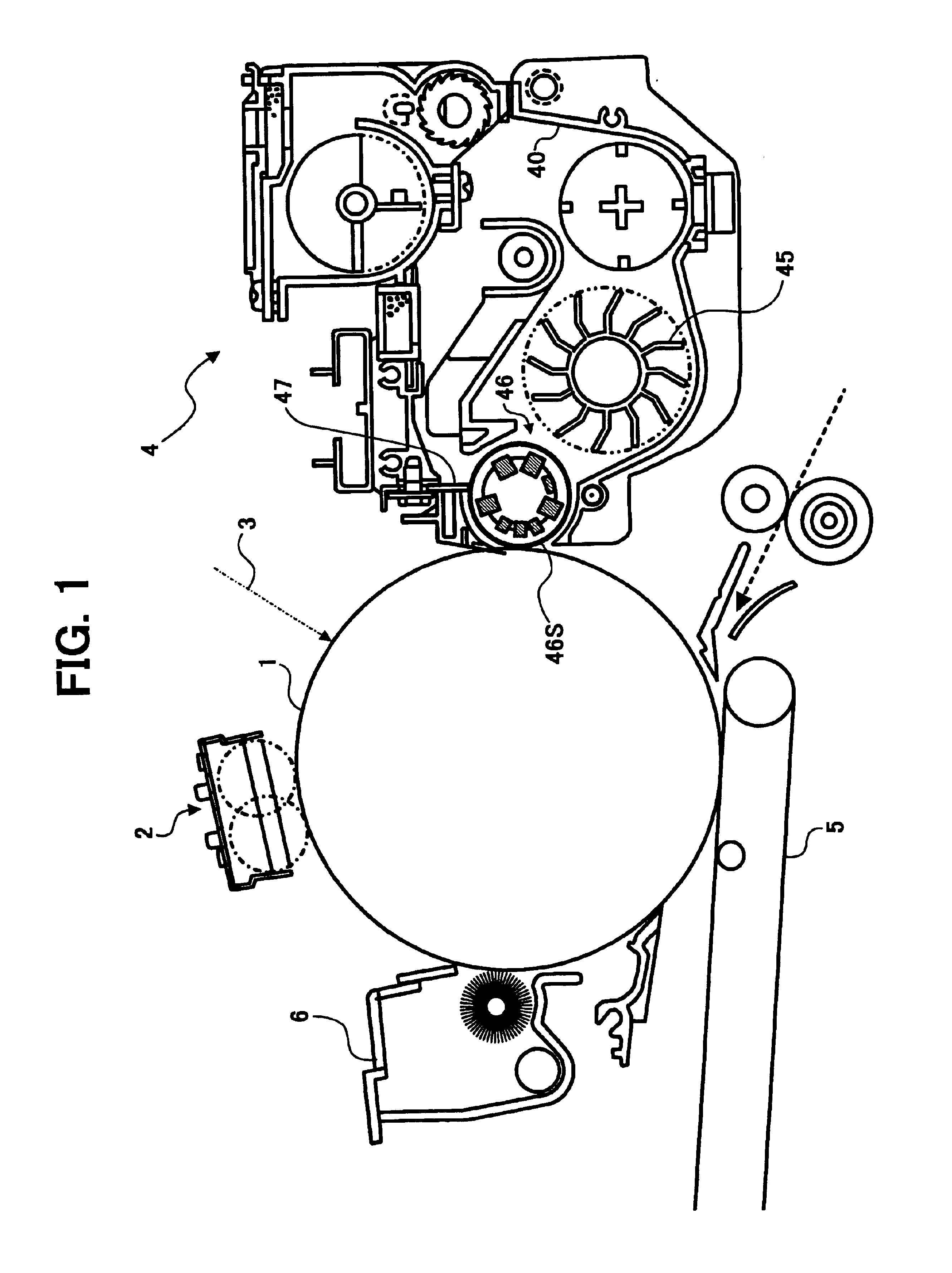Image forming method and apparatus
a technology of image forming and forming method, which is applied in the direction of electrographic process apparatus, instruments, optics, etc., can solve the problems of insufficient toner supply, low image density, and extremely bad fluidity, and achieve the effect of high quality
- Summary
- Abstract
- Description
- Claims
- Application Information
AI Technical Summary
Benefits of technology
Problems solved by technology
Method used
Image
Examples
example 1
Preparation of Fine Particles Dispersion (1)
[0155]The following components were placed in a reacting container having a stirrer and a thermometer and rotated at a speed of 400 rpm for 15 minutes to prepare a white emulsion.
[0156]
Water683partsSodium salt of sulfate of ethylene oxide adduct of11partsmethacrylic acid (ELEMINOL RS-30, manufactured bySanyo Chemical Industries Ltd.)Styrene83partsMethacrylic acid83partsButyl acrylate110partsAmmonium persulfate1part
[0157]The emulsion was heated to 75° C. and reacted for 5 hours. Further, 30 parts of a 1% aqueous solution of ammonium persulfate was added and aged for 5 hours to prepare an aqueous dispersion of a vinyl resin (styrene-methacrylic acid-butyl acrylate-sodium salt of sulfate of ethylene oxide adduct of methacrylic acid copolymer. A volume average particle diameter of the fine particle dispersion (1) was 0.10 μm when measured with LA-920. A part of the fine particle dispersion (1) was dried to isolate a resin portion. The glass tr...
examples 3 to 5
[0199]The dispersion diameter of the wax in the toner can be controlled by changing agitating condition of the components when the oil phase was prepared. The wax concentration in the surface portion and outer portion can be controlled by changing the aging temperature and time in the emulsifying process.
[0200]Accordingly, by appropriately changing the above-mentioned conditions, toners C, D and E having different wax concentration in the surface portion (from 0 to 1 μm) and the outer portion thereof were prepared. In addition, the procedure for preparation of the carrier in Example 1 was repeated.
example 6
[0201]The procedure for preparation of the toner and the two-component developer in Example 1 were repeated except that the ester wax was replaced with a carnauba wax subjected to a treatment of removing a free aliphatic fatty acid. Thus a toner F, and a developer including the toner F were prepared.
[0202]The physical properties of the above-prepared toners are shown in Table 1.
[0203]
TABLE 1Content ofContent ofWax area inwaxfinethe surfaceWaxparticlesparticlesportion ofexisting inhavingVolumehaving athe tonerthe outerdispersionaveragediameter nothaving aportion ofdiameter ofparticlegreater thandepth ofthe tonerfrom 0.5 todiameter2 μmfrom 0 to 1 μm(% by3.0 μm(μm)(% by number)(%)number)(% by number)Ex. 15.513.0356050(Toner A)Ex. 25.519.5335545(Toner B)Ex. 35.519.0255068(Toner C)Ex. 45.519.0226858(Toner D)Ex. 55.519.0357575(Toner E)Ex. 65.519.0258095(Toner F)Comp. Ex. 13.028.5308772(Toner G)Comp. Ex. 28.013.5308780(Toner H)Comp. Ex. 36.023.0657740(Toner I)Comp. Ex. 47.545.0409055(Toner...
PUM
 Login to View More
Login to View More Abstract
Description
Claims
Application Information
 Login to View More
Login to View More - R&D
- Intellectual Property
- Life Sciences
- Materials
- Tech Scout
- Unparalleled Data Quality
- Higher Quality Content
- 60% Fewer Hallucinations
Browse by: Latest US Patents, China's latest patents, Technical Efficacy Thesaurus, Application Domain, Technology Topic, Popular Technical Reports.
© 2025 PatSnap. All rights reserved.Legal|Privacy policy|Modern Slavery Act Transparency Statement|Sitemap|About US| Contact US: help@patsnap.com



